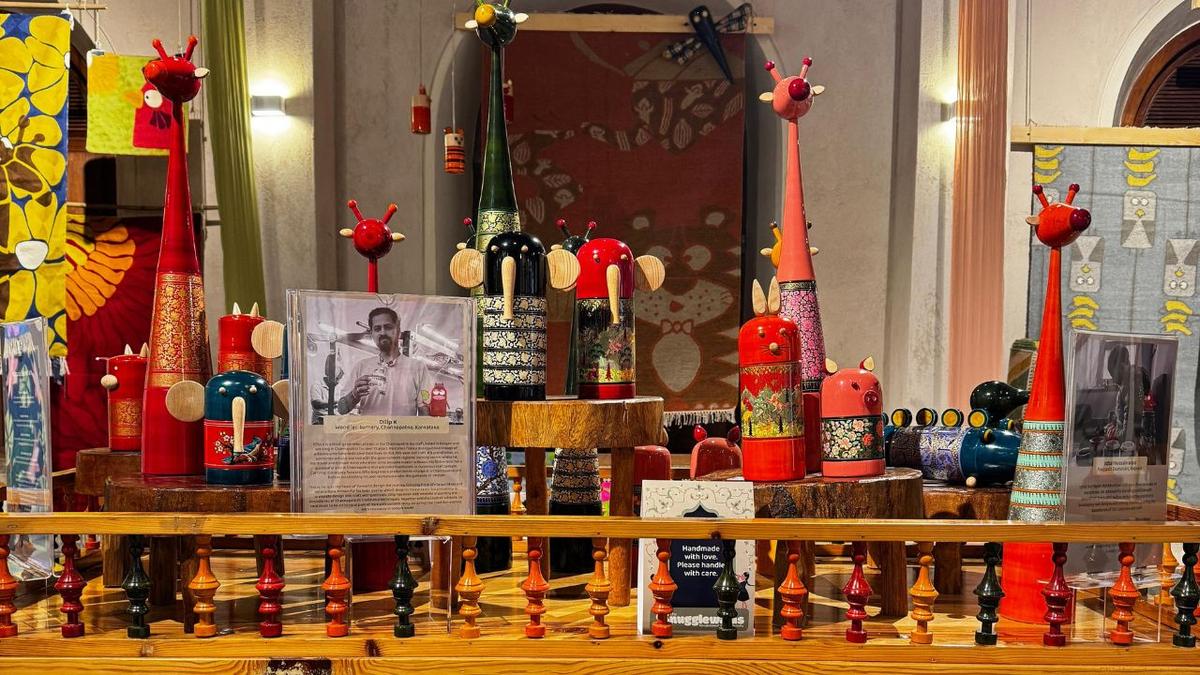Two years ago, the introduction of a six-lane Bengaluru-Mysuru Expressway posed an obstacle to the toy shops in Channapatna en route. Travellers no longer stopped by to indulge in impulse purchases. The brightly coloured handcrafted wooden toys stood unsold. In spite of a GI tag, the demand for the 200-year-old craft has been dwindling owing to lack of innovation and limited access to markets outside the region. The story is not much different for Bidriware. Government initiative, self-help groups, NGOs, e-tailers — and craftpreneurs, in the past decade, trying to reimagine the art — have supported or sourced from these artisans, exhibited them at urban pop-ups and bazaars, and retailed through social media. One man, however, has reimagined Channapatna for the modern shelf and cracked the code to create a successful business model.
In 2011, Bengaluru-based Karthik Vaidyanathan founded Varnam Craft Collective and, nearly 15 years after, has grown it into a multi-crore business, with retail stores in Bengaluru (Indiranagar, Jayanagar), Mysuru and Goa. But the shift between “a creative passion project” and a craft-based business comes with its share of upheavals and learnings, says Vaidyanathan, the brand’s principal designer. He cautions: “one can’t work in crafts from the viewpoint of commercial success alone.” Instead, he says, “the larger Varnam becomes, the more impact it will be able to have on the livelihood of the artisans”. Also, the delicate dance is to “not dilute the essence of the brand for the sake of the business”.
ALSO READ: Bengaluru-based Varnam Craft Collective launches the Snugglewalas
Varnam founder and principal designer Karthik Vaidyanathan. (By special arrangements)
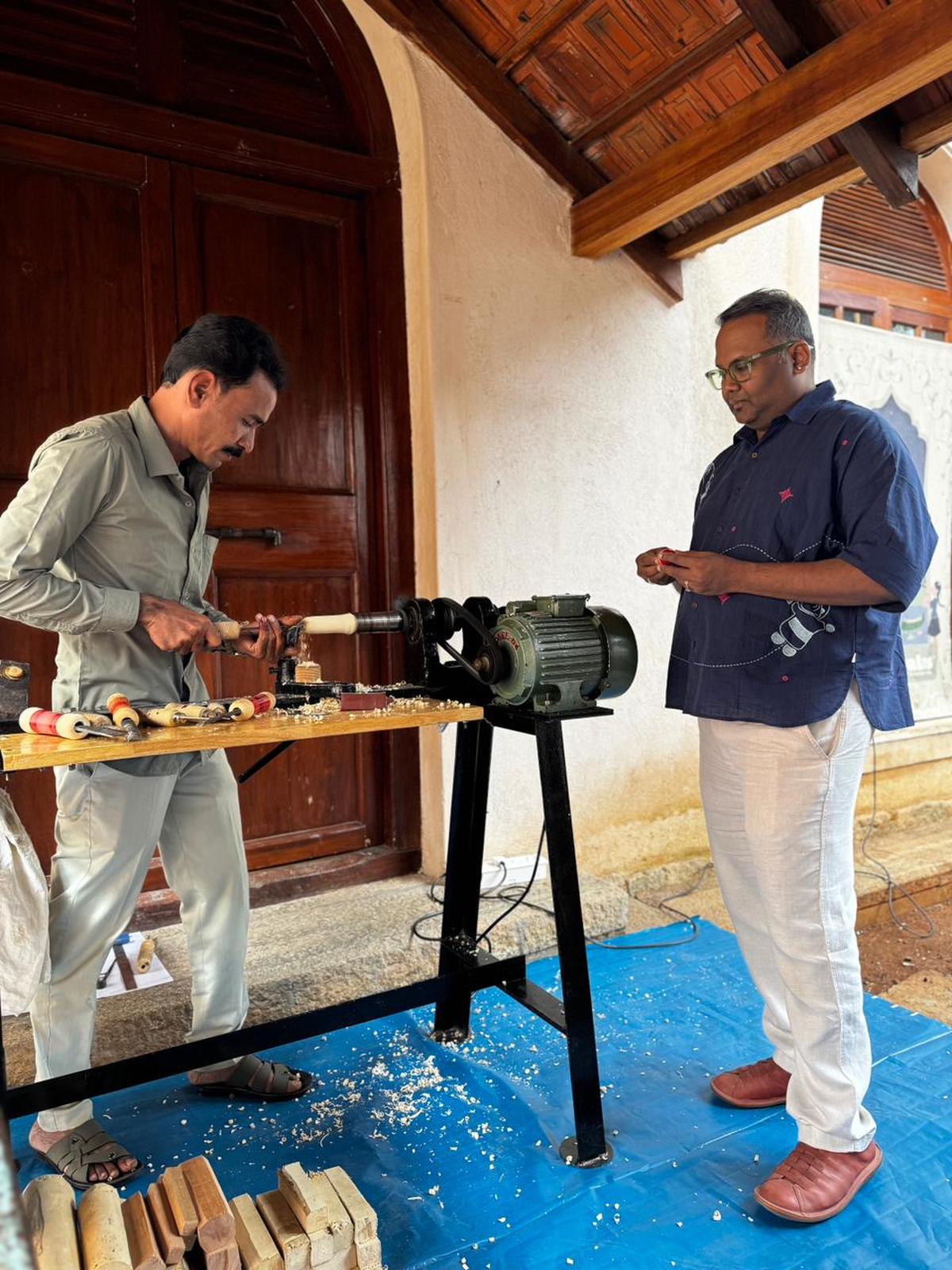
Vaidyanathan (right) with a craftsman.
Growing roots, branching out
The engineer turned communications specialist started Varnam when he was in his late 30s, with a personal investment of Rs 2 lakh. He began working directly with seven artisan families in Channapatna – Toy Town of India – to create fun and functional takes on this vibrant craft of wooden and lacquerware toys. Think owls dangling as festive lighting; a kuruvi, or sparrow, sitting atop a paper-roll holder; piggies transformed into coaster stands, bunnies into salt-and-pepper shakers and so on. For the first two years, Vaidyanathan would pop up at craft markets across the country before customers tracked down his home address. “They bought Varnam stocks out of my garage,” he recalls.
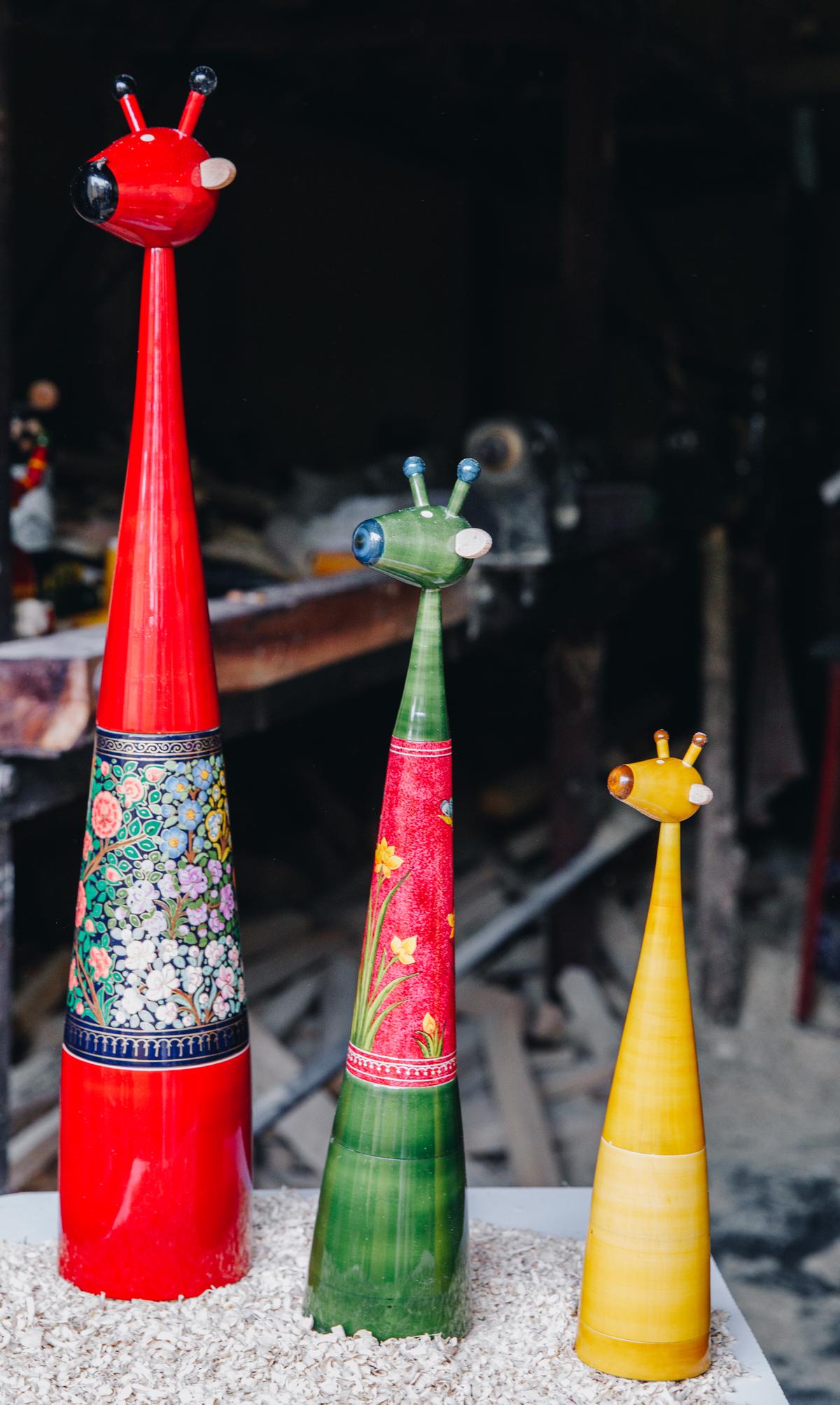
Varnam’s wooden toys.
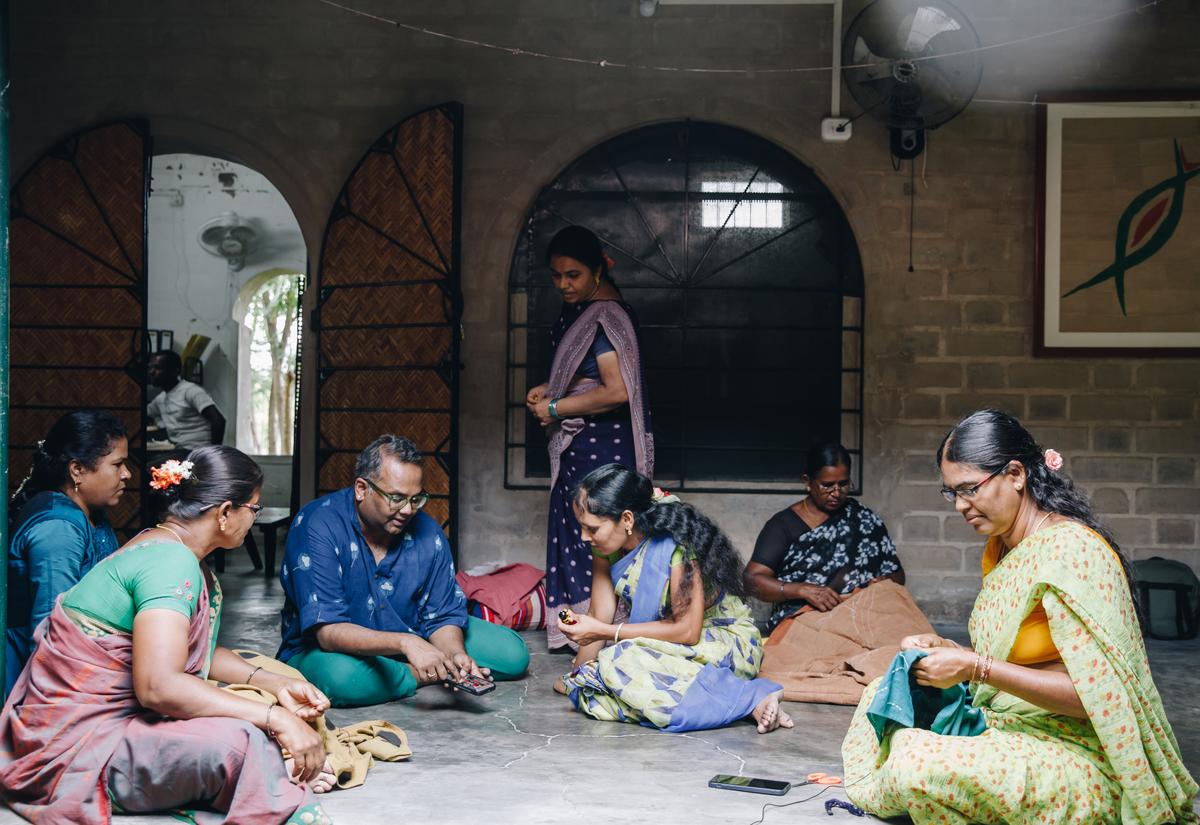
Vaidyanathan with women artisans.
Snappy, the wooden crocodile by Varnam.
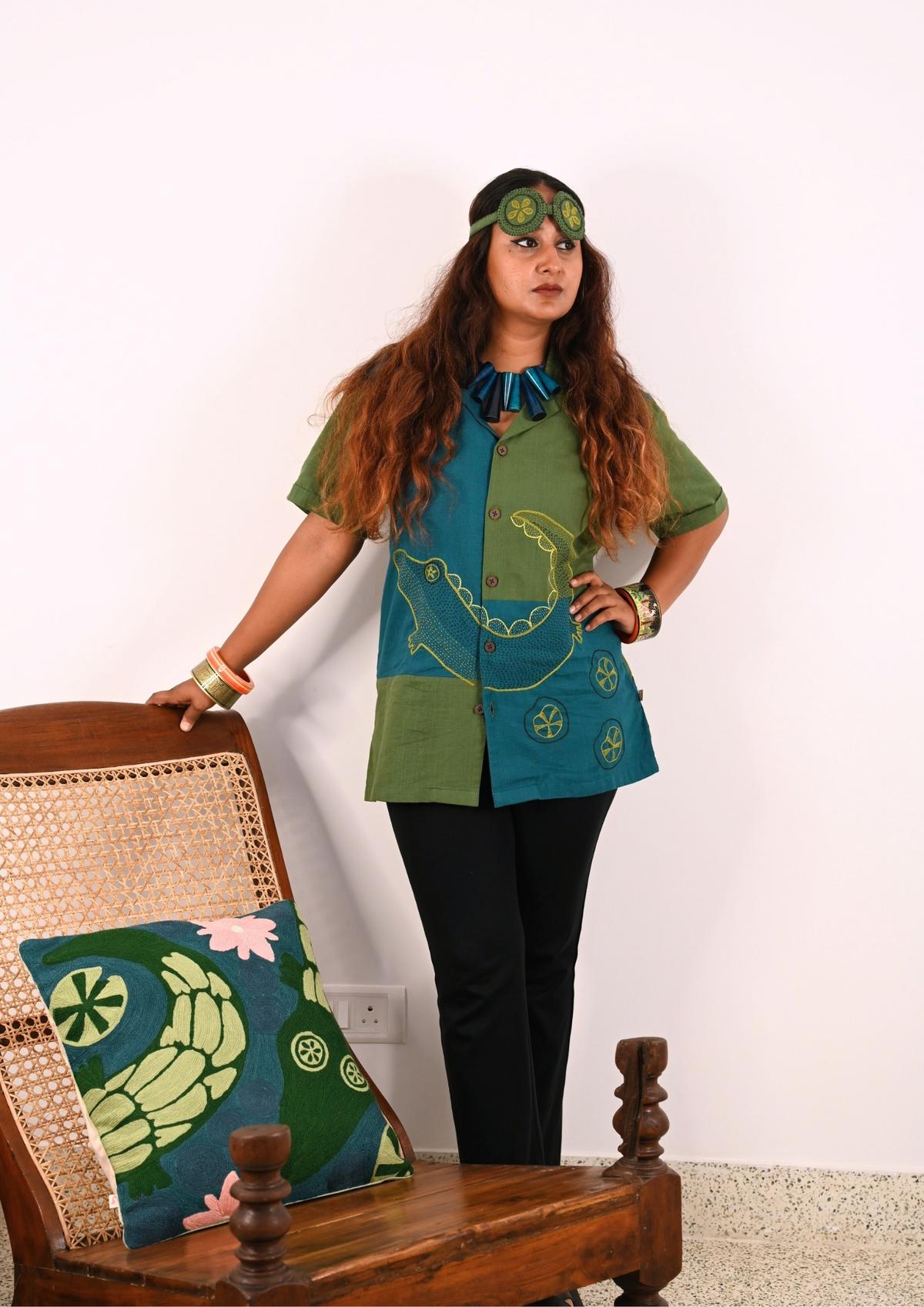
Snappy finds his way into textile by Varnam.
Today, Varnam works with 30 artisan families in Channapatna, and more than 300 artisan families across 11 other craft forms. “But we still aren’t a Fabindia,” Vaidyanathan quips. “Craft businesses aren’t something that venture capitalists give serious consideration to, despite this sector being the second-largest employer in the country.” The whispered reality is that a craft business is ‘working-capital intensive’. He says, “It’s our biggest struggle. We pay our artisan clusters immediately lest they will be crushed.” His transparency has resulted in “artisan clusters rarely leaving once included in Varnam’s fold.” But keeping this business practice alive isn’t always sustainable, he agrees.
In spite of public recognition and industry awards, Vaidyanathan says, “we still run month-to-month – and we haven’t been in the red only in the past three years.” They have had a 20% year-on-year growth barring the COVID years. He attributes this to having worked long enough across industries and has had “his fair share of reality checks” and to “a know-how honed from thousands of hours of going to retail exhibitions, interacting with sellers and buyers, the visiting artisans, getting baked in the sun and learning the ropes of the business,” he says.
Vaidyanathan prides himself on being “unemotional” in the service of the larger good. He shut down the Chennai store after 16 months of operation. “We realised this isn’t a market for our products because it didn’t fit into the value system of spending on real-estate, silk saris, diamonds, gold jewellery – things which are long-lasting and have a resale value,” he says. “Phenomenal sales during exhibitions in the city” didn’t translate to the retail store. Instead, Varnam reopened Bengaluru’s Jayanagar store, which was shut down “to prevent bleeding during the pandemic”.
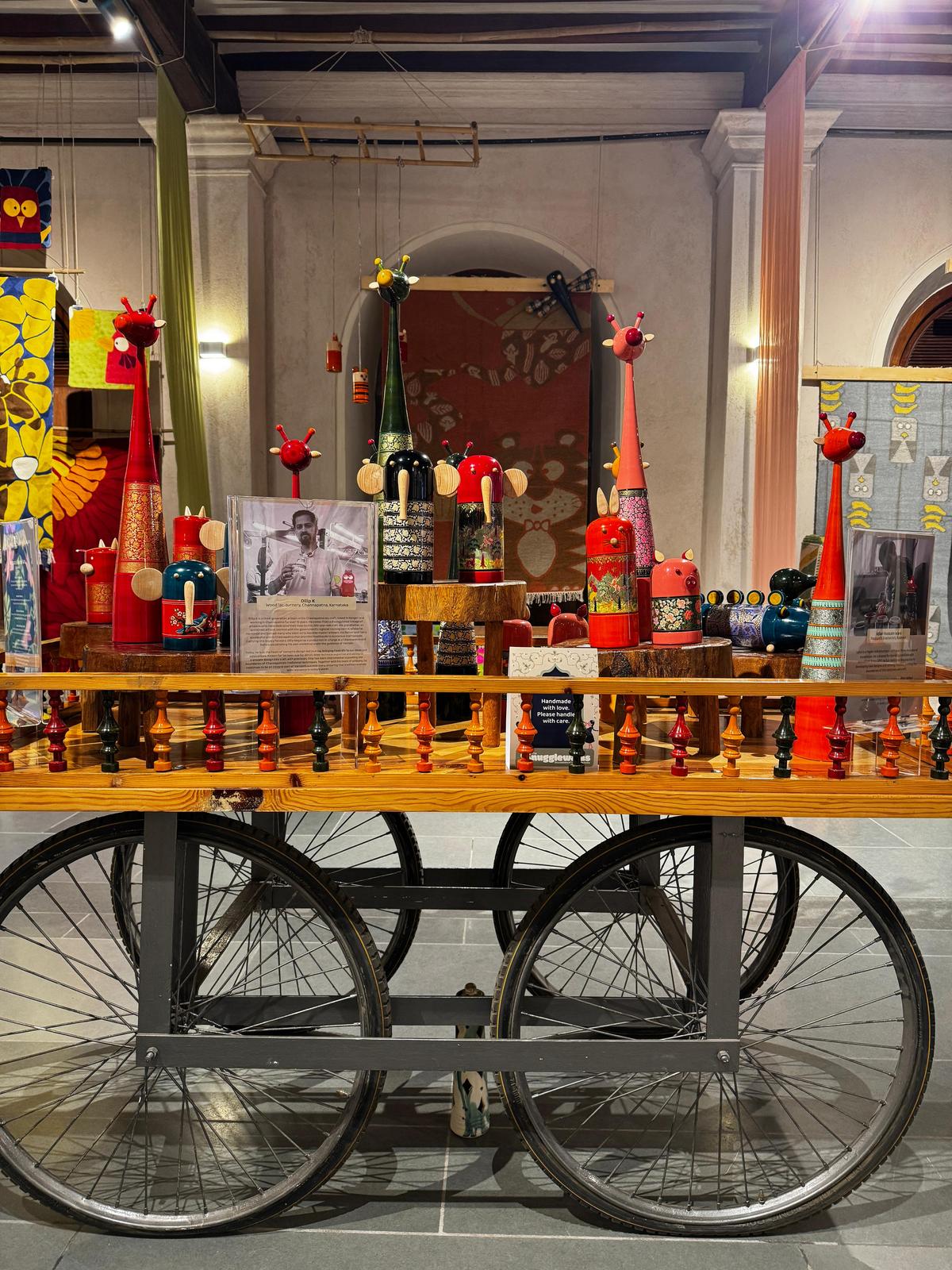
Snugglewalas by Varnam, a collection of 12 anthropomorphic characters across craft traditions.
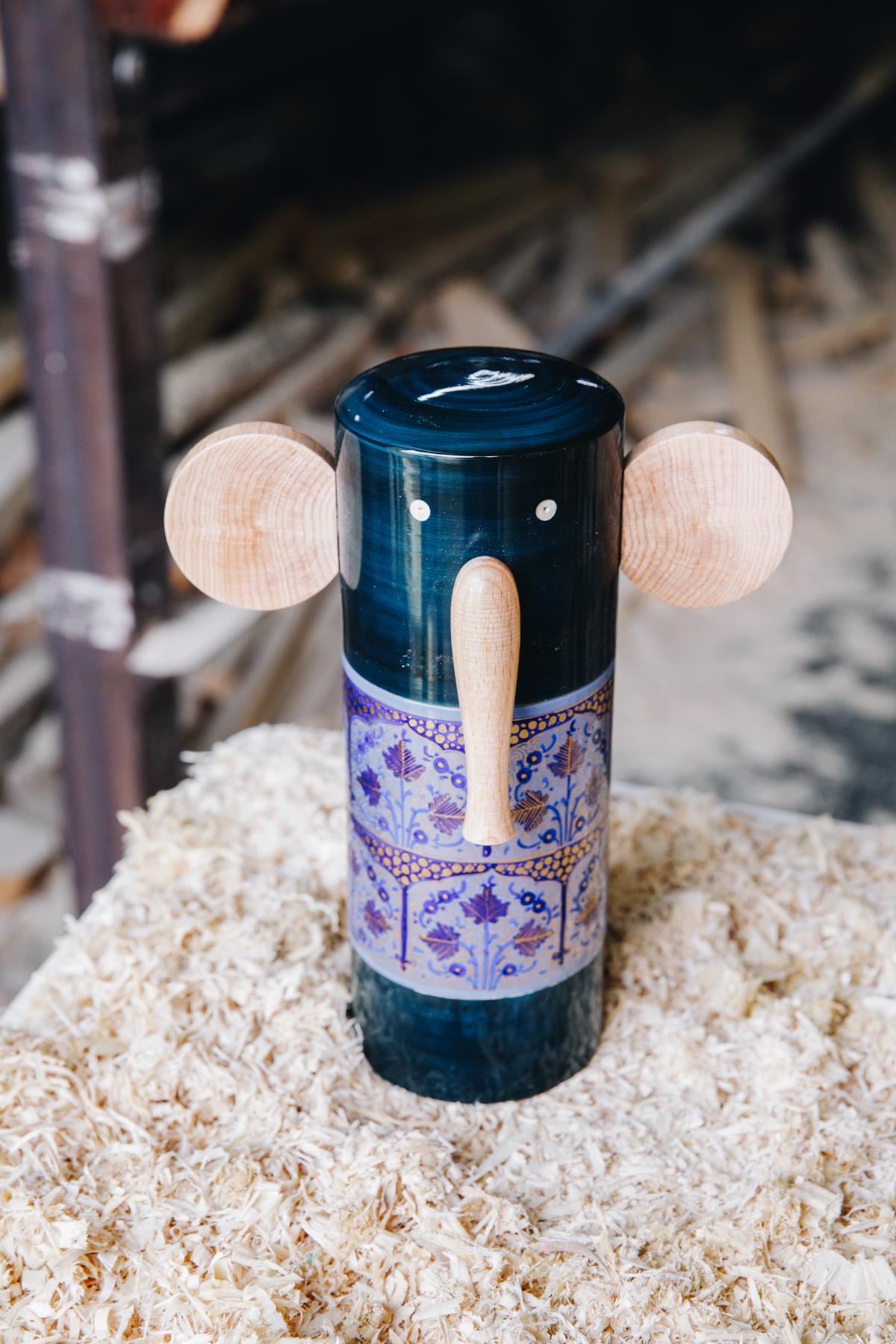
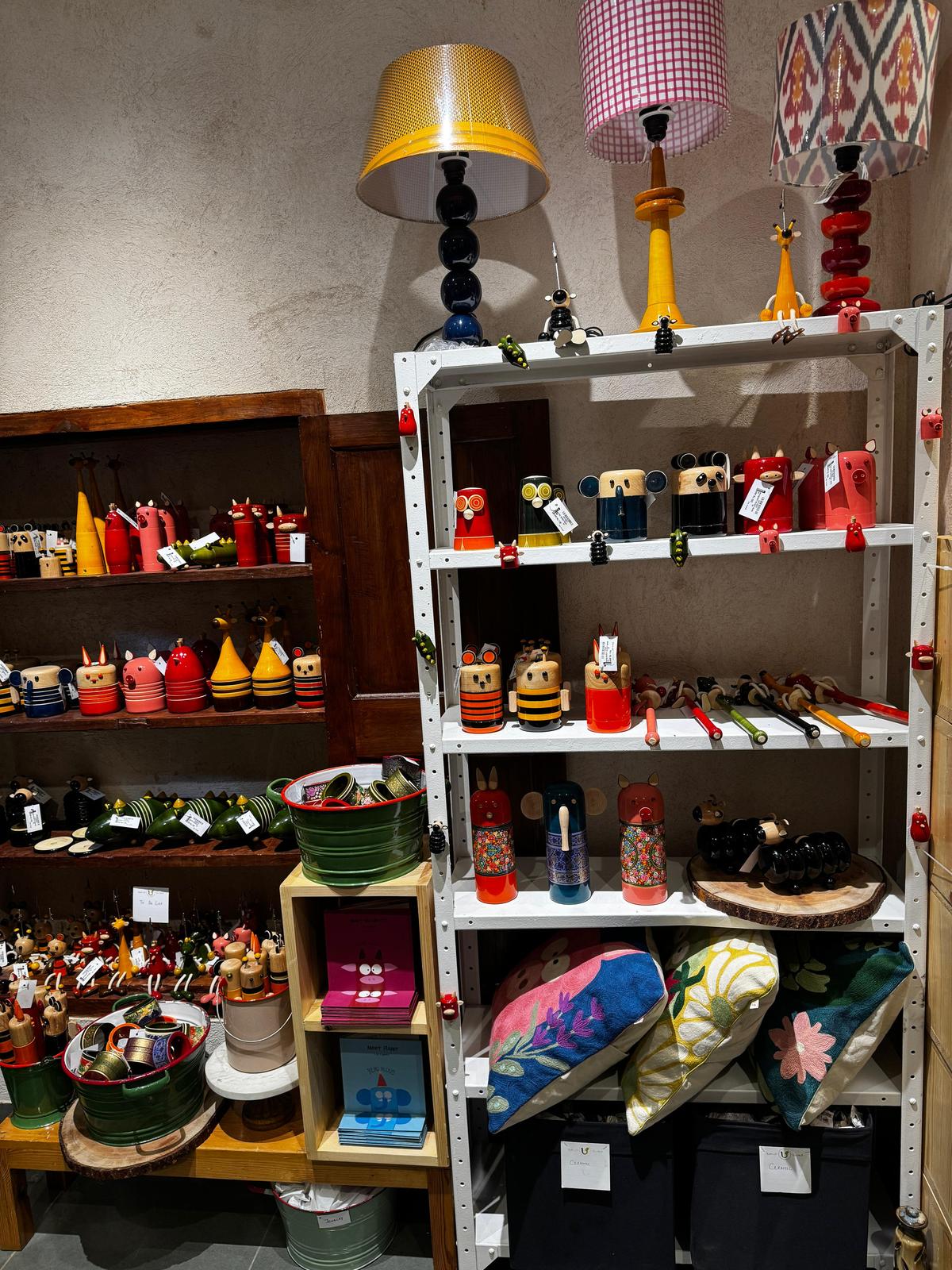
Vaidyanathan has diversified his range through a multi-pronged approach while honouring his brand’s first craft of choice.
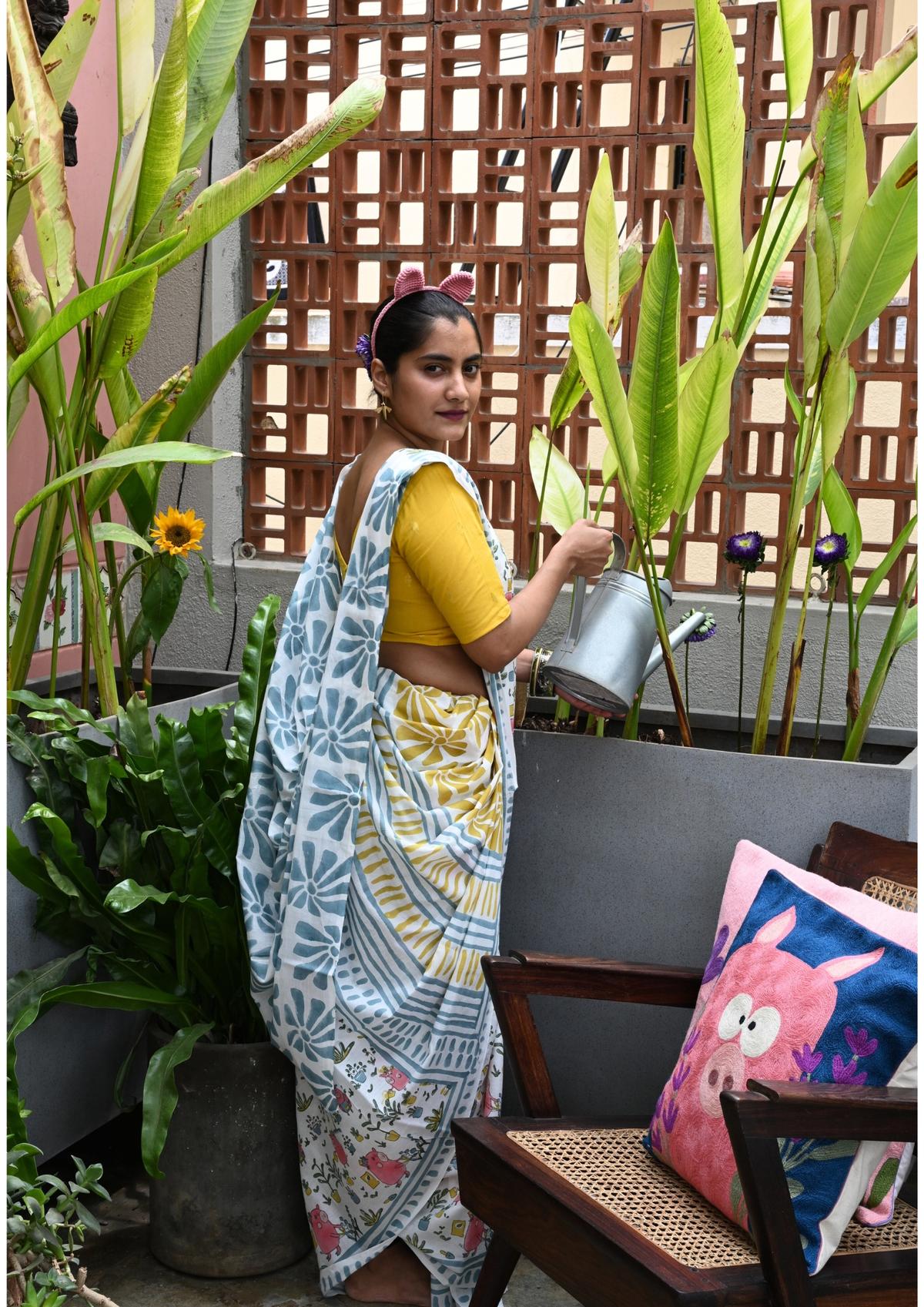
Crafting commentary
The competitive market, crowded with copycat brands, called for changes in the business strategy. Varnam’s signature has been Channapatna crafts. Vaidyanathan has diversified his range through a multi-pronged approach while honouring his brand’s first craft of choice. In order to claim ownership of his designs, he began to reproduce Varnam’s motifs across a range of products. Blockprinted textiles inspired by their Channapatna objects allowed Varnam “to move into apparel and soft home-furnishings.” This decision to expand helped “create a memorable brand identity.”
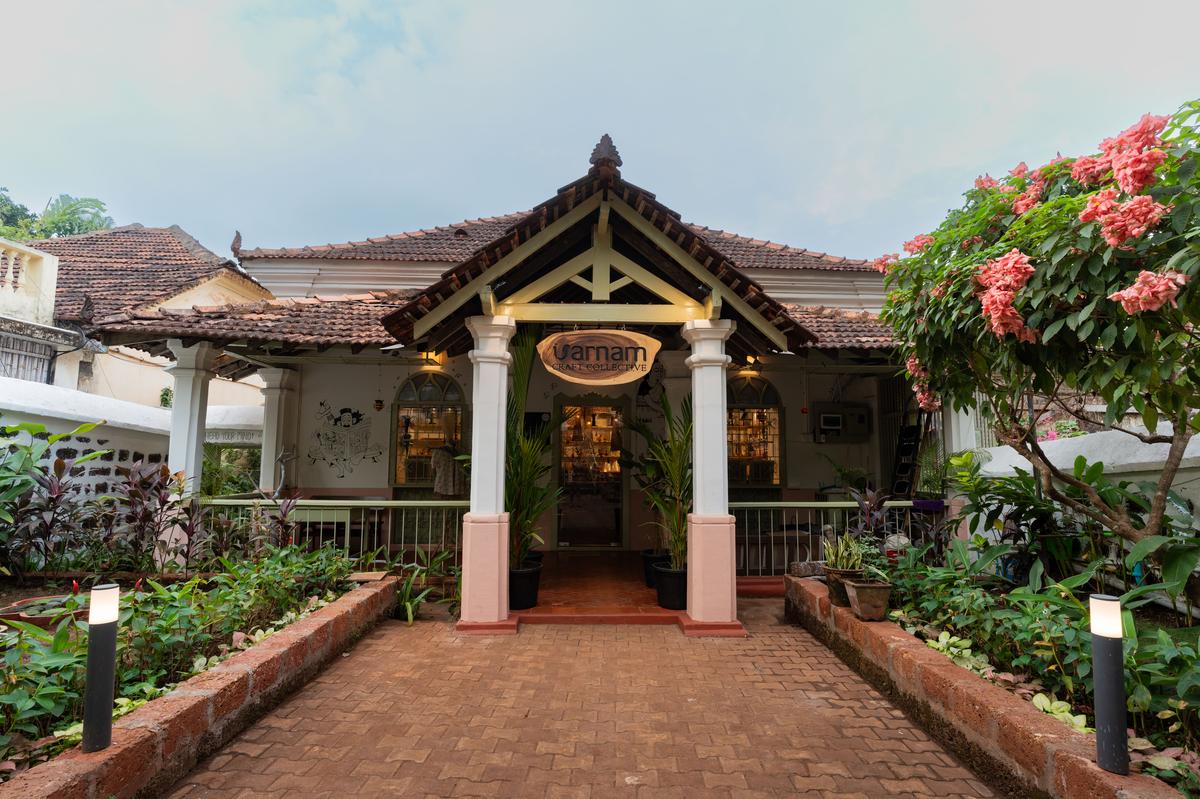
Varnam’s Goa outlet.
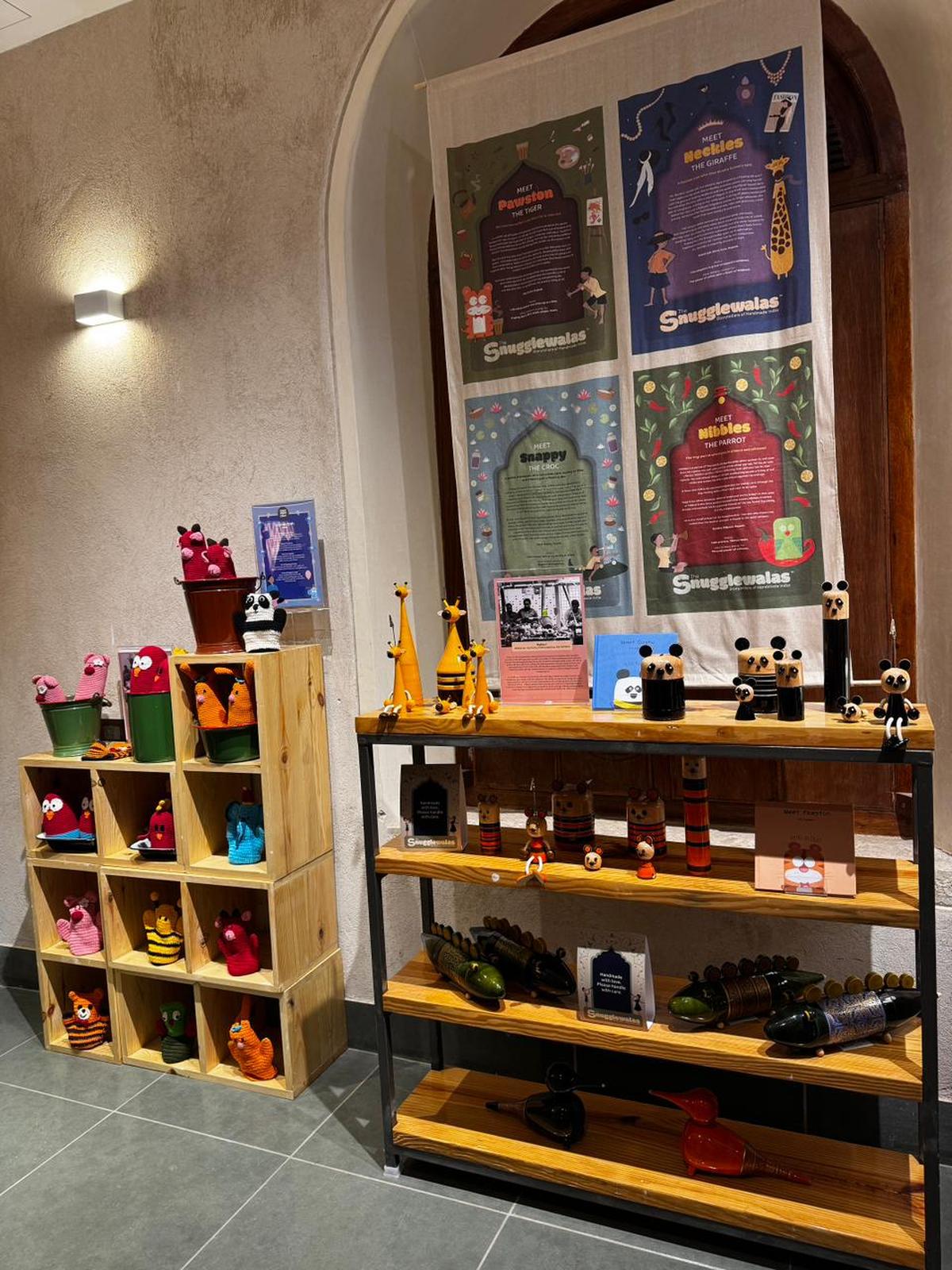
‘Snugglewalas’ exhibition in Bengaluru.
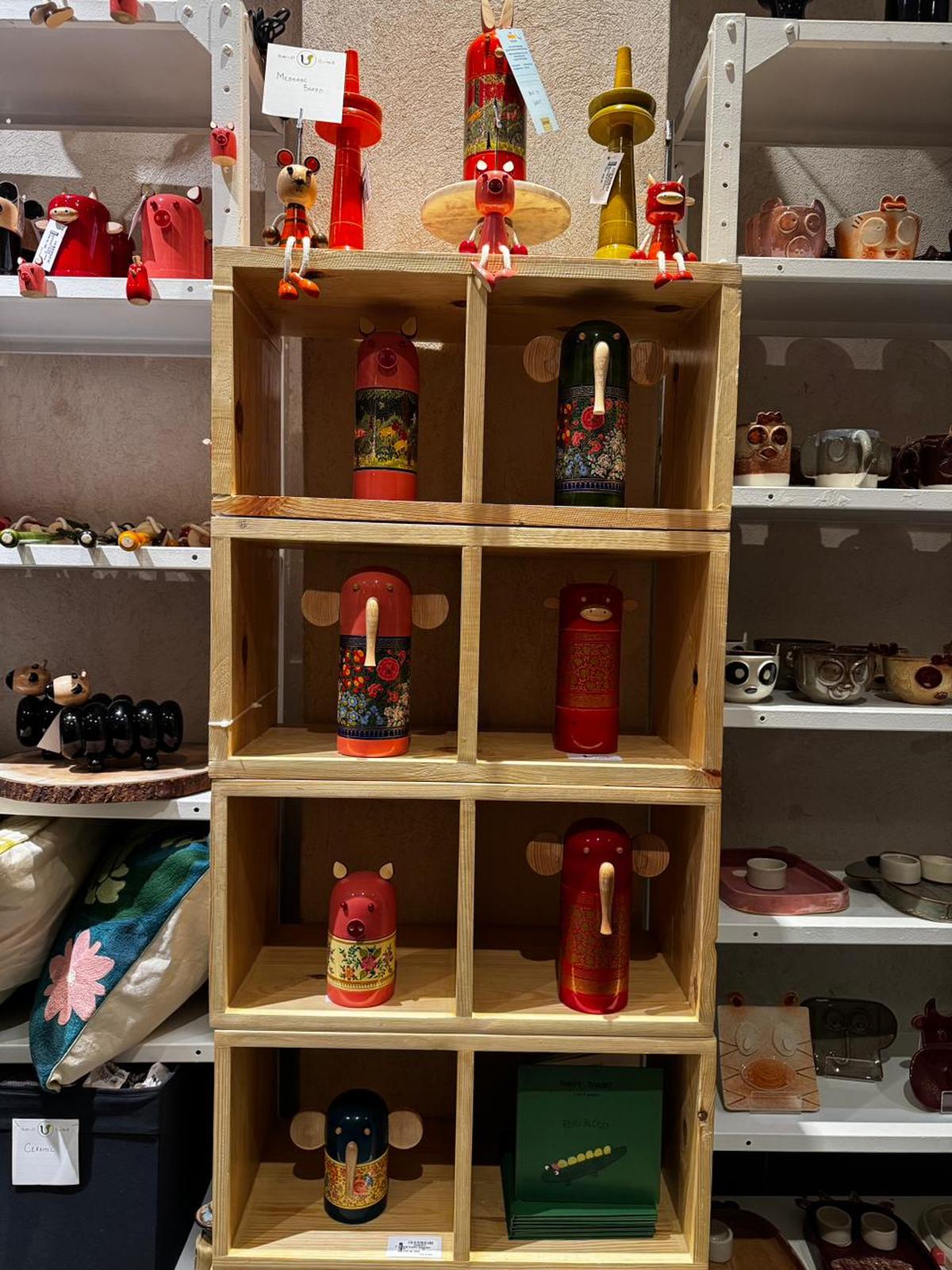
Varnam toys on display at ‘Snugglewalas’ exhibition in Bengaluru.
Vaidyanathan knew that customers wouldn’t return for Channapatna crafts alone. “We make board games with Lambadi women embroiderers, create jewellery with the artisans of Bidri and so on. But Varnam’s signature – the Channapatna craft – makes a strong appearance in each of these artisan collaborations: as pawns in the embroidered game-mats or the bidri work is inlaid into a Channapatna lacquer turnery. “Channapatna will always be at the heart of Varnam but we create things around it. It also introduces our customer base to different crafts of the country,” he says.
World-building
By 2027, Vaidyanathan aims to grow Varnam into a Rs 5 crore business. In August 2024, he got a Rs 2 crore seed fund from two angel investors-cum-designers Geeta Dipali and Hemant Suthar. It fuelled Varnam’s largest growth burst till date. With that they took on a “capital, labour and logistic intensive project”. This month, Varnam launched ‘Snugglewalas’: “a collection of [12] anthropomorphic characters who bring to life the different craft traditions of India.”
Vaidyanathan has leaned into his storytelling experience from his years in marketing and radio to infuse “emotion” into Varnam’s signature motifs. In a sense, he is turning them into toys again. “I’ve had this clarity: toys with a twist. Toys aren’t just for kids – everyone likes being playful,” he enthuses. “This starting point” has been the singular driving force behind Varnam’s identity and finds crystallisation in Snugglewalas. “A parrot in a block-printed cushion cover can be seen in a panja weave dhurrie and then in the crewel embroidery of Lambadis – and slowly, its quirks will emerge. Say, for instance, that it is a superstitious bird, and loves green chillies. We’re hoping this world-building will bond these motifs to the brand,” he says.
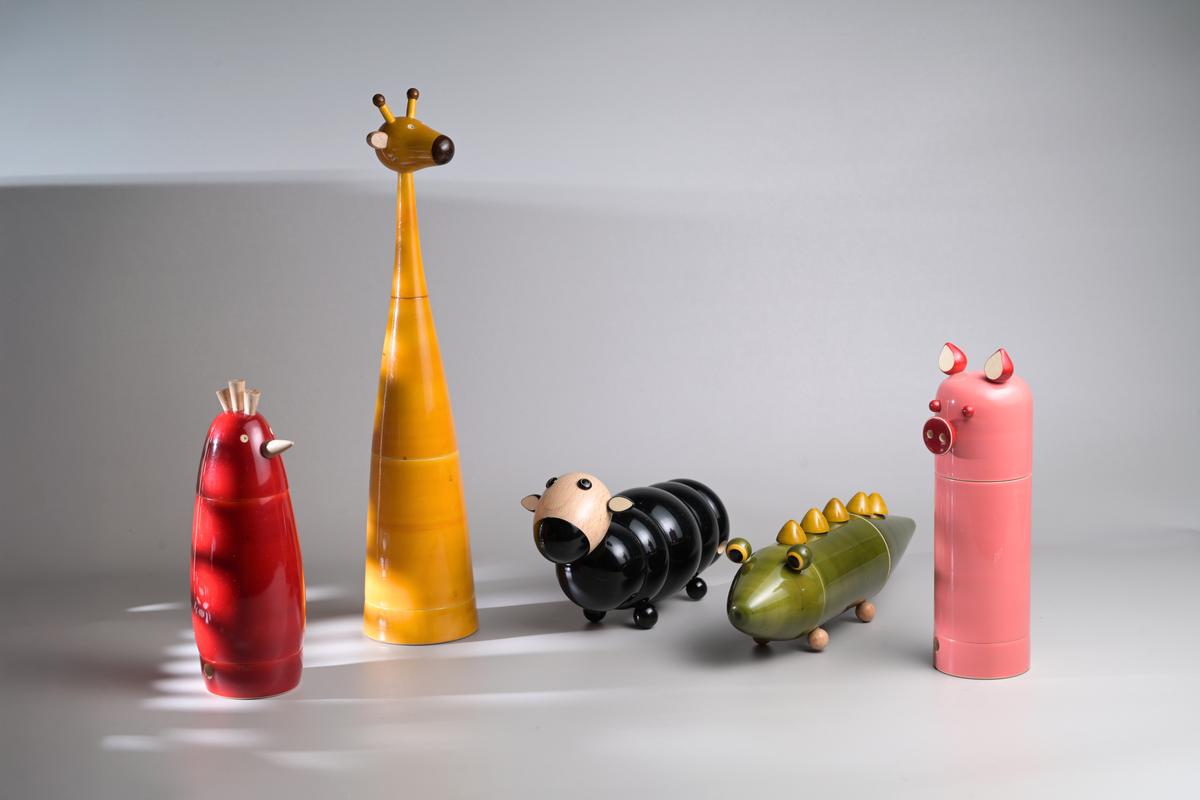
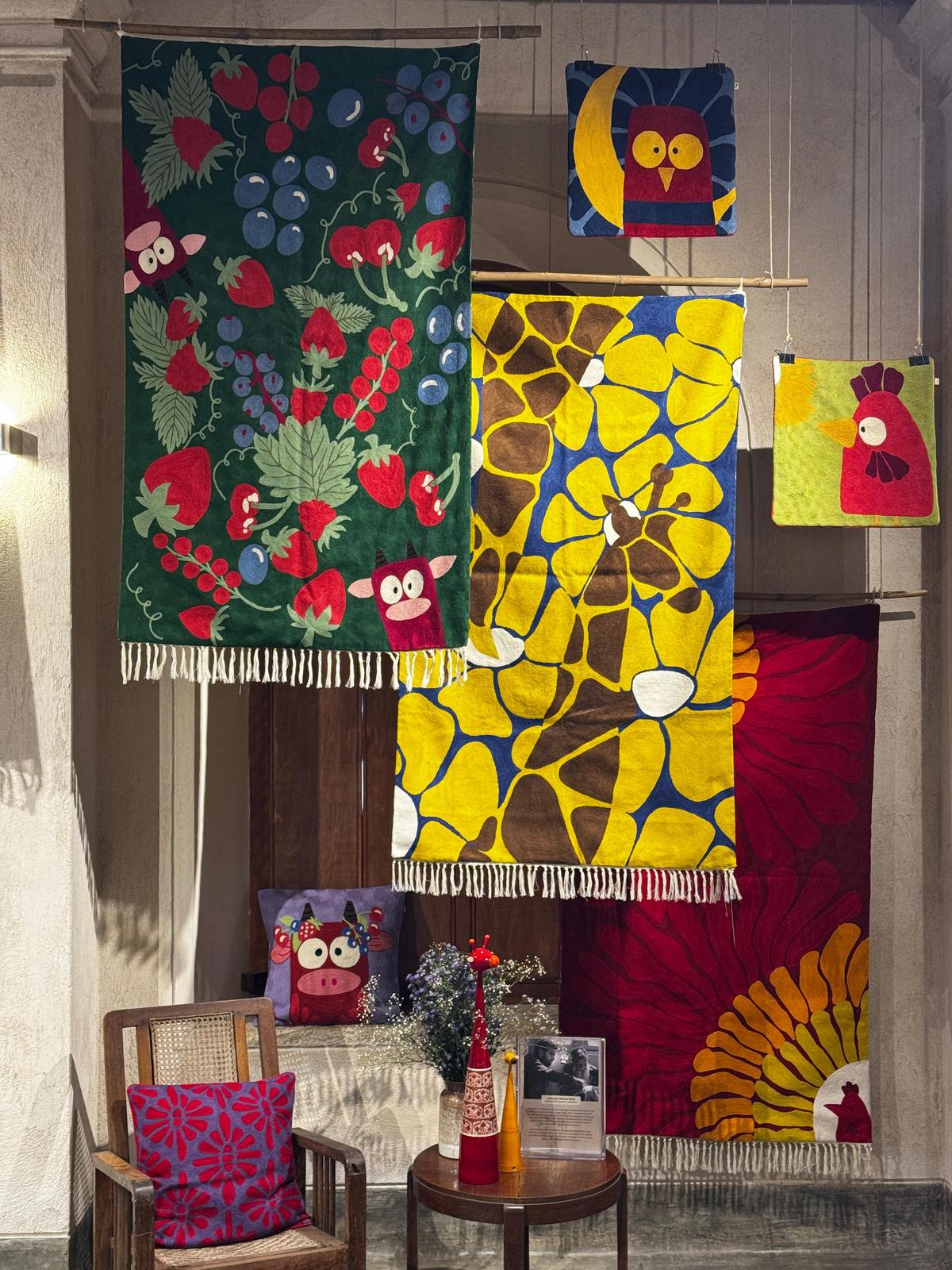
The Snugglewalas – The Storytellers of Handmade India is on show in Bengaluru till October 24 at Sabha, Shivaji Nagar and in Hyderabad from November 13-17 at Crafts Council of Telangana, Banjara Hills.
The writer and poet is based in Bengaluru.
Published – October 18, 2025 12:33 pm IST

